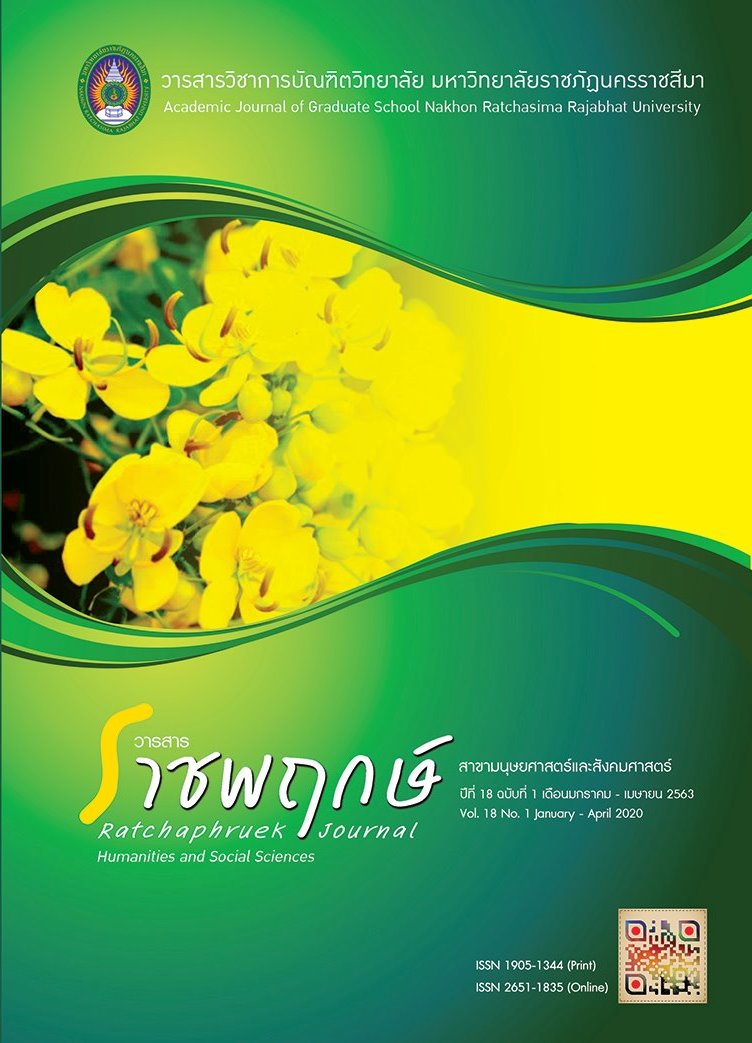Developing a Model for Reducing Alcoholic Drinking of People in Roi-Et Province
Main Article Content
Abstract
The purposes of the research were 1) to analyze the casual factors affecting alcoholic drinking of people in Roi-Et Province, 2) to design a model for reducing alcoholic drinking of people in Roi-Et Province, and 3) to implement and evaluate the model for reducing alcoholic drinking of people in Roi-Et Province. The research methodology was divided into 3 phases.
Phase 1: The quantitative research method was employed for collecting data and analyzing the direct and indirect casual factors affecting alcoholic drinking of people in Roi-Et Province. The data was collected by questionnaires from four hundred people in Roi-Et Province who were twenty years old. Path analysis was used for the study.
Phase 2: A model for reducing alcoholic drinking of people in Roi-Et Province was designed based the data of phase 1. The model was criticized by thirty research participants through the workshop, and the appropriateness of the model was assessed by the experts.
Phase 3: The model was implemented to thirty target populations. The effectiveness of the model was assessed and confirmed by MANOVA (Repeated Measure)
Results of the research were as follows:
1. The casual factors affected directly and indirectly alcoholic drinking of people in Roi-Et province consisting of the awareness of alcoholic drinking reduction (-0.53), the attitude toward alcoholic drinking reduction (0.25) and the motivations for alcoholic drinking reduction (-0.23). The percentage of the relationship among the variables was 17% (R^2 = 0.17).
2. The study showed that the model for reducing alcoholic drinking of people in Roi-Et Province consisted of six activities: 1) establishing goals and signing an agreement, 2) encouraging the participants by binding people’s wrist, 3) providing the participants with correct and useful knowledge of alcoholic drinking, 4) realizing the alcoholic drinking reduction and building reinforcement, 5) self-ability improvement, and home visit activities.
3. The research results indicated that the number of the alcoholic drinkers reduced significantly after implementing the model at the .01 level.
Article Details
References
ทิฆัมพร อ่อนละออ และนรลักษณ์ เอื้อกิจ. (2559). ปัจจัยคัดสรรที่สัมพันธ์กับการดื่มแอลกอฮอล์ของประชากรเพศชายวัยผู้ใหญ่ กรุงเทพมหานคร. วารสารพยาบาลศาสตร์ จุฬาลงกรณ์มหาวิทยาลัย. 28(2), น. 137-150.
นุสรา ศรีกิจวิไลศักดิ์ และสิริมา มงคลสัมฤทธิ์. (2559). ประสิทธิผลของโปรแกรมการปรับเปลี่ยนพฤติกรรมการดื่มเครื่องดื่มแอลกอฮอล์ในกลุ่มที่มีรูปแบบการดื่มแบบเสี่ยงต่ำหรือเสี่ยงสูง. วารสารสาธารณสุขมหาวิทยาลัยบูรพา. 11(2), น. 39-51.
รภัทภร เพชรสุข, บุญยง เกี่ยวการค้า และนงพิมล นิมิตรอานันท์. (2553). “รูปแบบความสัมพันธ์เชิงสาเหตุของพฤติกรรมการบริโภคเครื่องดื่มแอลกอฮอล์ของนักเรียนผู้ใช้บริการหน่วยงานอนามัยโรงเรียน.” วารสารพยาบาล. 59(2), น. 61-69.
สุรศักดิ์ ไชยสงค์, กัณณพนต์ ภักดีเศรษฐกุล และทักษพล ธรรมรังสี. (2556). รายงานสถานการณ์การบริโภคเครื่องดื่มแอลกอฮอล์รายจังหวัด พ.ศ. 2554. นนทบุรี: ศูนย์วิจัยปัญหาสุรา.
World Health Organization. (2014). Global status report on alcohol and health 2014. Switzerland: World Health Organization.


